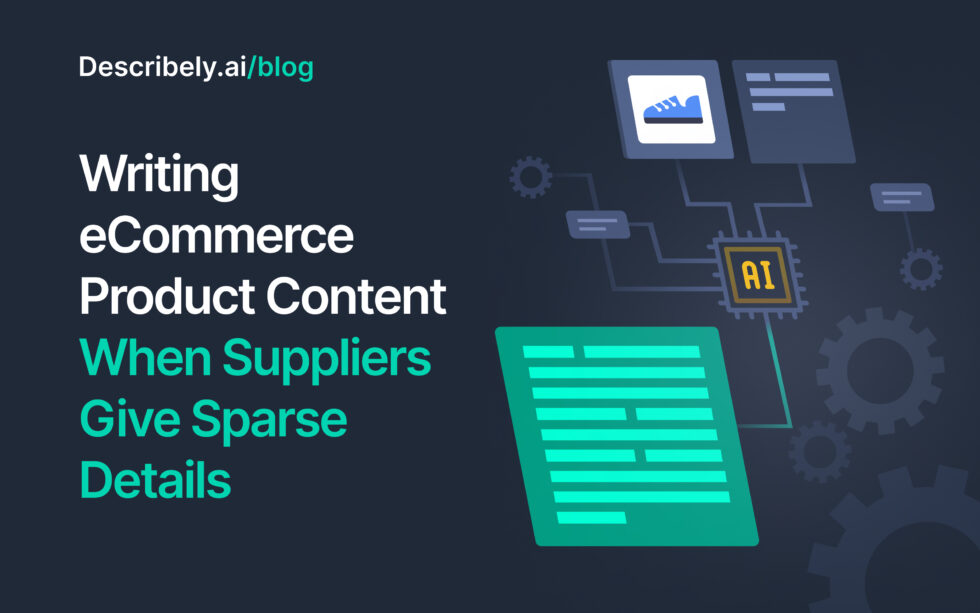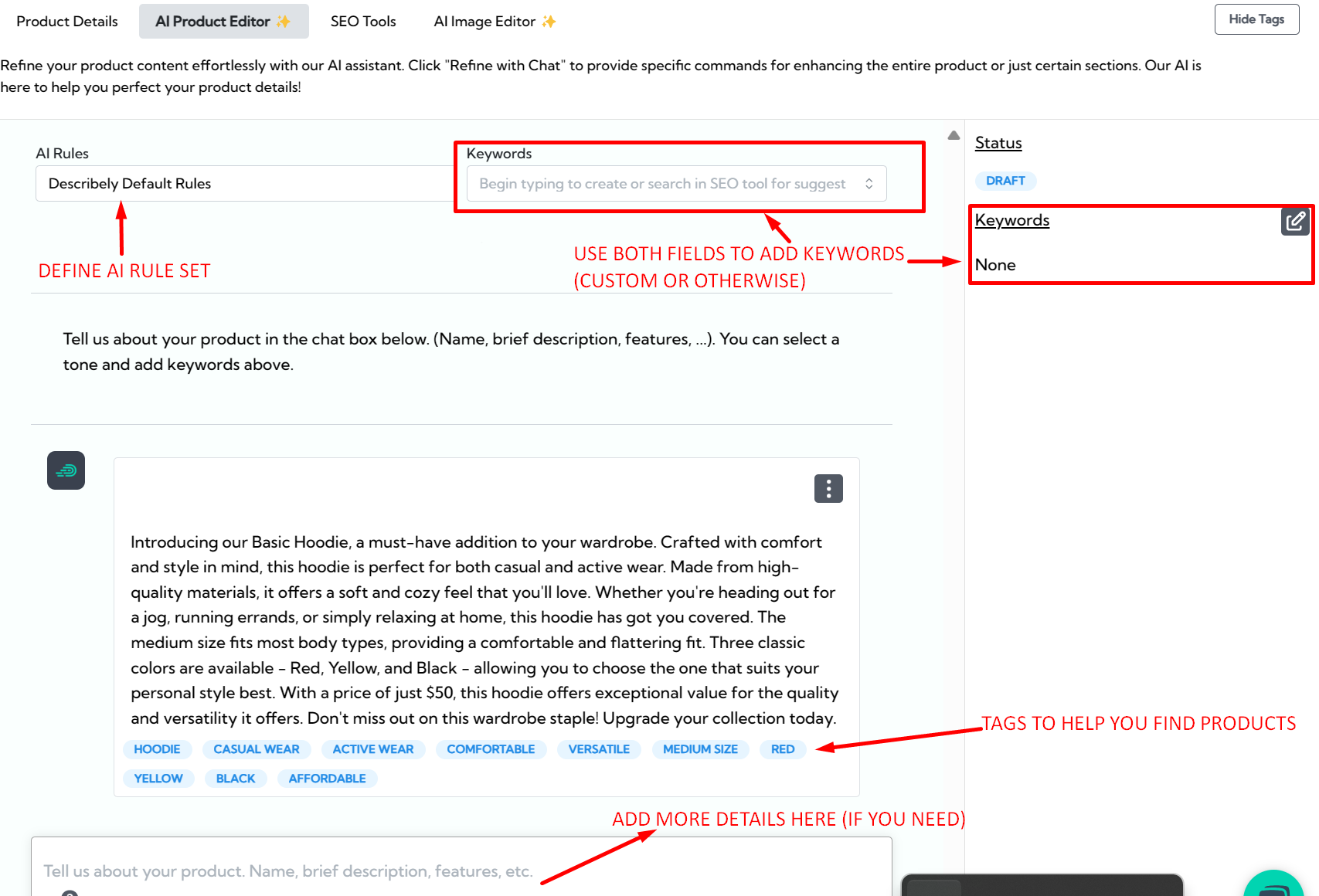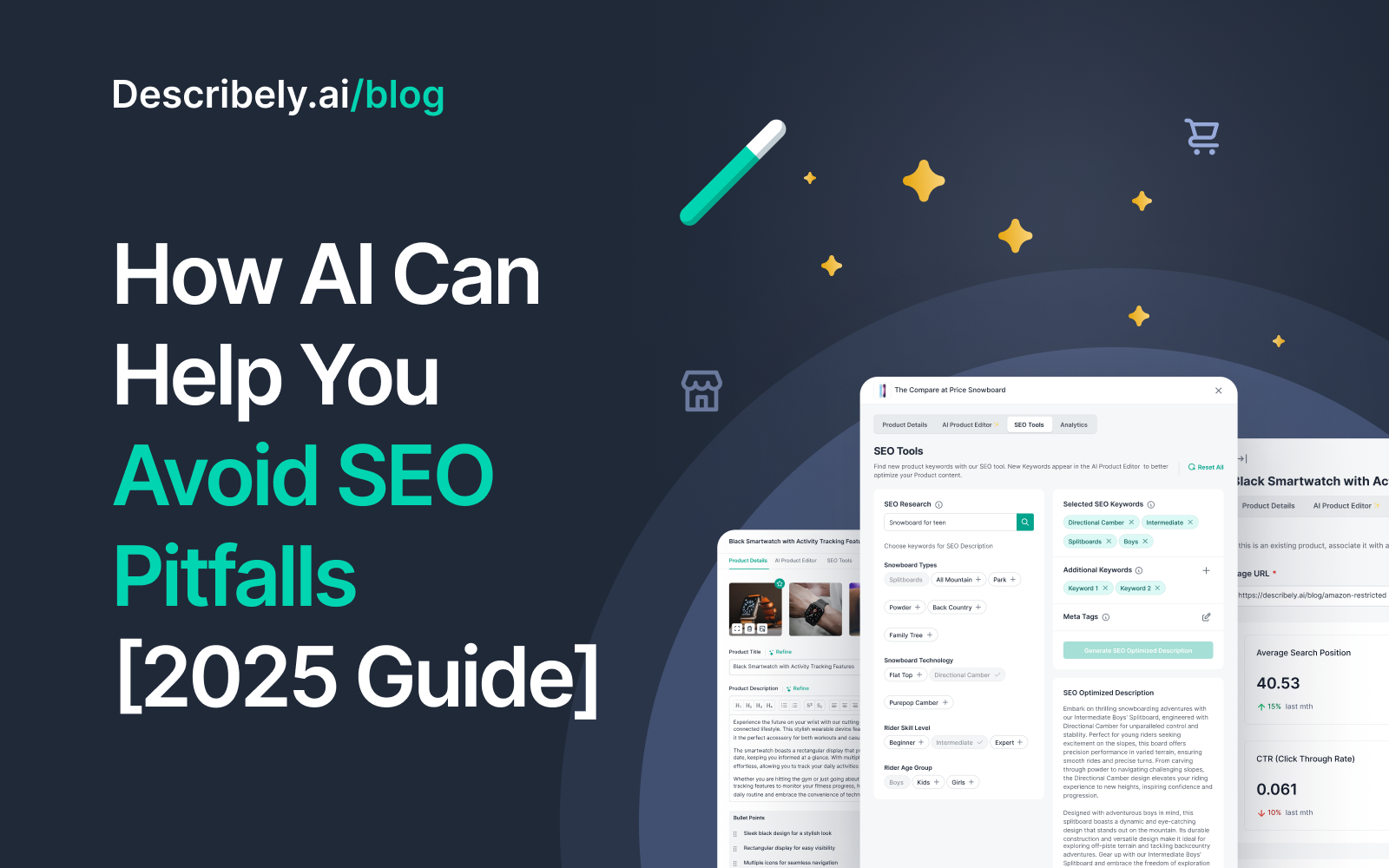
How to Write High-Quality eCommerce Product Content When Suppliers Give Sparse Details
Imagine this: You’ve contacted your supplier to get product details for a recent batch of catalogs you bought from them. A few hours later, the only thing you get are sparse product details.
You contact them again, but they say they don’t have any more details to offer.
Now you think: “I have thousands of products to sell; surely I can’t only publish these scant details and consider them to take the place of product descriptions?”
It seems like you have a few options on the table:
Option A: Hire a writer who offers product content enrichment services to fill out the sparse details and enrich your product copy. But this means extra work, editing hassles, workflow bottlenecks, and more time, money, and effort down the drain.
Option B: Copy your competitor’s product descriptions. But this also means your products virtually have no USP and difference from your competitors (and let’s not even discuss what this could mean for your SEO).
If both these situations sound unideal to you (to say the least), you might have another option to consider: Using an AI solution (like Describely) to write high-quality product descriptions.
Alternatively, if your thoughts are something like, “Duh, that’s why I’m here on the blog. Just show me how to sign-up for Describely already,” then here’s where you can create a free account: Sign up for Describely.
What do we mean by sparse product descriptions?
Just so that we’re on the same page, we consider sparse product descriptions to be those that are only one or two lines long, with virtually no flowery language to sell the product, and only basic information about each specific item.
For example, something like, “Basic hoodie, medium size, Three colors available: Red, Yellow, and Black. Priced at $50.”
Or here’s another example:
- Bedsheet for a queen-size bed
- Available in five colors
- Home delivery available
- Designs can be customized
Basically, if you were to read your supplier’s mind, this is what their thoughts would look like: 
And if you happen to agree with them, here’s the kicker: Customers need the flowery language and romanticized details to actually imagine themselves using the product; hence, proper product descriptions are absolutely essential to drive sales and make your products discoverable.
What is product content enrichment?
Product content enrichment is basically adding elaborate wording to your product information, glamorizing them enough so customers can actually see the value of it, and imagine themselves using it.
For example, if you input the above examples of sparse details in Describely, these are the product descriptions it’ll come up with:

(Product description for the Basic Hoodie prompt)

(Product description for the Customizable Bedsheet prompt)
Moreover, tools like Describely will also provide meta titles, meta descriptions, keywords, HTML data, tags, etc., but that’s a conversation we’ll have later below.
Current methods for product content enrichment
1. DIY Copywriting
DIY copywriting is when you or someone from your team learns a few copywriting techniques to create the product copies themselves.
While this method looks good in theory and makes you think you end up saving money if you don’t hire writers as an alternate option, let’s do a quick cost-benefit analysis here:
Even if you pay yourself a minimum wage of $15/hour and have 400 products in your catalog, with each product description taking you at least half an hour to write, edit, and polish, you end up spending $3,000 behind those product descriptions.
In comparison, Describely, an AI copywriting tool that was specifically designed for the e-commerce industry, only costs as much as $90/year (which is $7.50/month) to write and manage more than 400 products.
So, after rounding up the percentages, the cost of hiring yourself to do the job is almost 40000% higher.
2. Copying Content
Copying content is another product content enrichment method that’s common in the industry. However, this method raises a couple of issues:
- You attune yourself/your business to the risk of a copywriting claim (content on the web is protected by copyright laws);
- Your product ends up looking generic, and customers will have no reason to choose you over your competitors; and
- You, because of plagiarized content, will ruin your search rankings, SEO, and potential backlink partnership opportunities.
3. Hiring Writers
Hiring professional writers does have a couple of pros and cons.
The obvious pro is you get your hands on high-quality content that’s SEO-optimized without having to spend time doing the task yourself.
The cons of hiring professional writers are that it’s expensive, you’ll need to appoint an additional team member to oversee content production and communicate with them, and you’ll need to invest a lot of time to get the content you need.
For example, if AI takes 10 seconds to produce a product description, the writer will at least take 10 minutes —- now, multiply this number by the number of unlisted products you have on hand.
Plus, if you hire a couple of writers, your writing style is going to differ in many of your product descriptions, which means that you’ll send a ton of time editing copy to meet brand guidelines.
4. Outsourcing Content
Last but not least, if you don’t know where to begin hiring writers or if you don’t want to oversee editing responsibilities, you can consider outsourcing the task to someone who offers product content enrichment services (such as a content marketing agency).
However, you’ll have to pay them more than what you’d pay the writers because if a writer is going to charge both you and the content marketing agency $100 per description, the content marketing agency is going to charge you $150-200 for the same content because it took them time to proofread and edit it and send it over to you.
This is basically your product content enrichment per SKU price and the price it costs to reduce your workload.
Using AI to enrich product content
We previously discussed how using AI to enrich product copy can help you reduce spending your time, money, and effort.
So, let’s use this section to discuss the differences between generic AI tools vs. non-generic AI tools like Describely, which are specifically created for eCommerce content.
We know from our previous experiment the kind of content Describely generates if you feed it sparse product details, so let’s take a look at the kind of content ChatGPT can generate if you feed it the same information: 
While the content itself isn’t all too bad, it does happen to go on and on, which makes it read more like a short-form blog and less like a product description.
Additionally, generic AI is only good for businesses that have limited products to deal with because they’d have to navigate each prompt and its subsequent response instead of just searching product names or tags.
Moreover, if you stick with generic AI, you’ll need to copy-paste each and every description individually. Describely, on the other hand, has store connectors that allow you to forget the hassle of copy-pasting content.
Lastly, sometimes the only kind of product enrichment you need to do is enrich existing content with your unique brand voice —- in such cases, you can use tools like Business Hub on Describely to update all product descriptions in bulk —- the same, unfortunately, cannot happen in generic AI as you can only update one description at a time.
How to enrich product content in Describely?
With all said and done, if you’re wondering how to begin using Describely to enrich product content, here’s a step-by-step process:
Quick PSA before you begin: You can set custom rules on Describely to help it mimic your brand’s voice and keep the same tone/style for each description. Learn how to set custom rules here.

Step 1: Once you’ve signed up for Describely and created a catalog, you’ll get the option to add new products to this catalog. (From here on, you can choose to import your product from CSV or simply add a new product —- click on whichever option that serves you best.)

Step 2: If you click on the latter, a new tab will open up where you can input your sparse product details in “Product Bullet Points.” At this stage, also assign a name to your product.

Step 3: Click on “Save Changes” on the same tab and then go to AI Product Editor. There, click on “Refine With Chat.”

Step 4: And that’s it —- your product description will show up! You can choose to edit or save it.

Step 5: If you need to spruce it up with SEO details, you can go to “SEO Tools” and write the name of your product. Describely will fetch the most relevant keywords and write meta titles, meta descriptions, and HTML data for you.

Lastly, if you need to enrich content in bulk, you can simply click on “Bulk Actions” and select the products in your catalog to make it happen.
Enrich your content at scale
In this day and age, AI and other technologies have advanced beyond comprehension.
We understand the world and the eCommerce space looked way different just 5-6 years ago; this was the time when we needed to rely on DIY copywriting methods or spend a good chunk of our money hiring writers and agencies.
However, in 2023, with the way generative AI tools have grown, there’s really no need to do so.
You can keep track of your entire product catalog, bulk edit content, improve your search rankings, integrate keywords, and generate product descriptions, metadata, tags, and HTML data, at virtually no cost.
Actually, we’ll make you a promise — you get to access Describely’s capabilities at no cost for a limited time —- if you like our AI, we’ll happily welcome you to our customer pool, but if you don’t like it, then we’ll cut our losses.
Learn how Describely can help you create content that sells more and ranks higher. Get started now!



